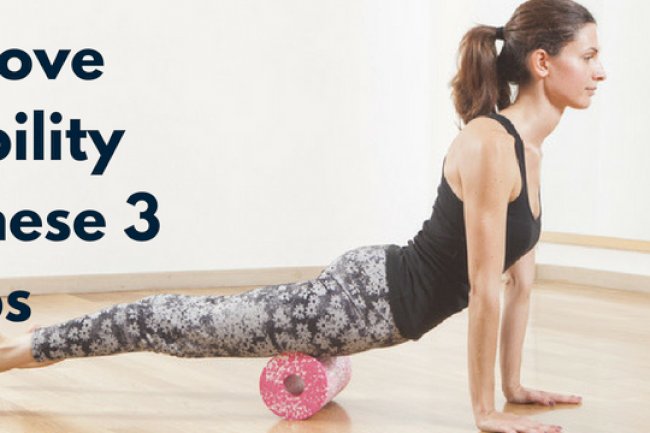Waist Trainers For A Slimmer Waist - Do They Actually Work?
A look at the sudden trend of waist trainers and their claims of aiding in weight loss and a hourglass figure.
In recent times waist trainers being worn by celebrities and influential figures in society have gained popularity as a tool to help achieve an hourglass figure, but there's no proof that they are able to permanently change the shape of your body or aid in long-term weight loss. Rather, they may do more harm than good.
Let's take an objective look.
What Is a Waist Trainer?
Waist trainers are a modern iteration of corsets, a garment that dates back to the 1500s. They are commonly made of a thick material like latex, neoprene, or spandex, and use zippers, velcro, or hook and eye closures like the ones found on the back of bras to compress the waist and abdomen into an "hourglass" (a figure eight 8)shape.
But personal trainers say waist trainers are unlikely to help with long-term weight loss and can have dangerous side effects.
Understanding What Waist Trainers are Meant to Do.
Waist trainers aren't a new invention. Today’s waist trainers are similar to corsets that people wore more than a hundred years ago. Women wore corsets under their dresses to make their waistlines look smaller.
The idea behind a waist trainer is to gradually build up to wearing it for longer periods of time each day. As you wear it longer, it molds your waist and hips to form a more well-defined hourglass figure. According to 'claims' by companies selling waist trainers, they can trim inches off your waist and help you lose weight in the process. If you’re looking to boost results from your workouts, a waist trainer may be a great short-term addition to your routine. However, it isn’t healthy to wear a waist trainer for extended periods of time.
What are the Impacts of Waist Trainers on your Health?
1. A Temporary Fix
Maybe you’ve decided to invest in a waist trainer to see what kind of results you can achieve. Keep in mind that any results are temporary and will quickly disappear after you stop using a waist trainer. If you lose a few inches off of your waist, they may come back after you leave the waist trainer off for a few days or a week. The product forces your body into a particular shape, often getting rid of the water weight you carry around your midsection. But without the constant support of a waist trainer, your waist returns to its normal shape and size. Waist training doesn’t cause any short-term health problems, but long-term use may have side effects.
2. Waist Trainers Restrict Breathing
Waist trainers compress the abdomen and diaphragm. The diaphragm is a muscle in the chest right below your lungs that helps you breathe. As the diaphragm contracts and relaxes, the air is pushed into and expelled from the lungs. Waist trainers interfere with the natural pattern of breathing, not allowing the diaphragm to fully descend as the lungs fill with air and compressing the outward motion of the ribcage. This can lead to using smaller accessory muscles in your shoulders and neck for breathing, leading to shallower breaths and tension in your upper body.
The core's natural process of contracting and stretching during physical activity becomes prohibited by the compression and pressure from waist trainers. It also causes the diaphragm muscles to slowly degrade and ultimately cause breathing issues in the long run.
3. Waist Trainers Cause Superficial Weight Loss
While waist trainers may provide the appearance of a slimmer physique, any weight loss experienced while using one is temporary, as it's mostly water weight. Water makes up a large part of the human body. But water retention or "bloating" occurs when excess water is stored in the body's tissue and membranes, oftentimes in the abdomen. Compression garments, like waist trainers, reduce the amount of swelling or bloating by promoting blood flow, but the effect is temporary.
When the body's water gets replenished again, that weight will come back. Real weight loss happens when superficial water weight is eliminated and you've managed to actually burn fat underneath. This prompts a slimmer physique and toned appearance. Additionally, waist trainers can lead to a loss of muscle, causing a lowered metabolism, increased risk of injury, and fatigue.
4. Waist Trainers May Increase the Risk of Prolapse during Postpartum
During pregnancy, the muscles in the abdomen stretch, which can sometimes lead to diastasis recti, a condition where the rectus muscles two parallel bands of muscles that meet in the middle of the abdomen become separated. Diastasis recti can cause a bulge in the abdomen and can weaken abdominal muscles.
Waist trainers cause increased pressure on your abdomen, leading to more stress on your pelvic floor. While most prolapse improves over time, using a waist trainer can worsen prolapse given the increased pressure downward on the pelvic floor.
Is Waist Training Safe?
Waist training is similar to fad diets and many fitness fads. It may provide some temporary waist thinning, but it ultimately does not provide a safe, long-term solution to weight or fat loss. Long-term use of waist trainers can lead to organ damage. It can also lead to digestive issues, such as acid reflux.
Waist training also makes breathing difficult. You may not get enough oxygen or become easily winded. For this reason, you should not wear a corset or waist trainer during exercise. If you feel lightheaded or short of breath, you should remove the waist trainer immediately.
Commonly Asked Questions
Can I Wear it While Working Out?
Although waist trainer enthusiasts believe that a person can wear one while working out, this is not advisable. Waist trainers can make breathing hard.
Does it Help With Body Fat?
A waist trainer will not help reduce body fat, but it can make abdominal fat more compact. It can also push the internal organs into unnatural positions, though.
Can I Wear it While Pregnant?
Women should talk to their doctor or health care provider before putting on a waist trainer when pregnant. A waist trainer puts pressure on the abdomen, which could cause issues for the developing fetus, It is definitely a no.
What's The Alternative?
Modern fashion and popular culture place intense pressure on women to achieve an hourglass figure, but having a slim waist does not necessarily equate to good health, and it might not be possible for you depending on your unique bone structure and body shape. If you are overweight and concerned about your health, it's possible to lose weight with healthy habits rather than wearing a waist trainer. If you want to safely lose weight, here are a few recommendations:
-
Eating a healthy diet rich in fruit and vegetables.
-
Exercising for 150 minutes of moderate-intensity aerobic activity or 75 minutes of vigorous-intensity aerobic activity each week.
-
Sleeping between seven and nine hours each night.
-
Reducing stress.
Summary
Waist trainers may be an appealing shortcut to a slim figure, but there is no proof that they actually aid in weight loss efforts. Rather, waist trainers can have negative health consequences like disrupting breathing and increasing the risk of postpartum prolapse. If you're having trouble losing weight, consider talking to a doctor or healthcare professional instead of spending your money on a cleverly advertised gimmick.
What's Your Reaction?























